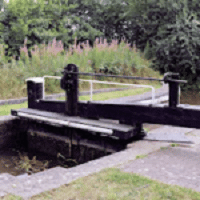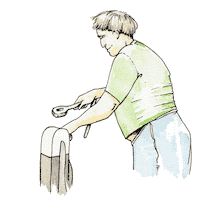How to Work Canal Locks Safely And Smoothly
Canal locks are probably the most difficult thing to get the hang of, and they require the most physical effort too! Instructions will all make more sense when you get to your first lock!
Are Canal Locks Difficult To Use?
Remember that hire firms will always take you through your first lock if required. Most people find lock working enjoyable, involving all the group, once they have done their first few!
It might seem confusing here, but in fact most of lock working is just common sense that you can pick up by taking it slowly and watching and talking to other boaters. Most boaters will be holiday makers just like you, and happy to chat about ways to do things, the weather and canal conditions.
Being able to work locks safely and smoothly is essential if you are hiring a boat and handy if you are going on a hotel boat and want to help.
Mostly you do have to work locks yourself, though some rivers have locks that are worked for you by lock keepers and some canal locks have keepers who may assist you.
Why Do Canals Need Locks?
Locks allow canals to go up and over hills. They sometimes are single locks, sometimes in flights of twenty or more. A lock is a bit like a big bathtub that you sail in to when it is nearly empty. You fill it up and then sail out the other end. This lifts the boat up to a higher canal level. Or it lowers the boat down to the lower level if you are letting water out of a full lock.
To allow the boat to get in and out, and to keep the water in, there are gates at both ends of the lock. Sometimes there is one ‘single’ gate, sometimes two ‘double’ gates, for you and your crew to push open and closed. There are top and bottom gates and it is only possible to open a gate when the water levels on both sides are the same. So the top gate will only open when the lock is full of water, and the bottom gate only opens when the lock is (nearly) empty.
What Do We Have To Do To Work Through A Lock?
To work your boat through a lock you need to wind paddles up and down (2 lower photos right) and push gates open and shut. The top paddles let water from above the lock in to fill the lock. The bottom paddles let out the water from inside the lock. The order that you use them all in depends on whether you are going uphill or downhill, and whether you find the lock full of water or empty.
The other important thing you have to do is prevent the boat being pushed about by the rushing water. Some people use the engine to help, but all locks have wooden or metal bollards that you should take a restraining rope around.
What Are The ‘Paddles’ And ‘Windlasses’ That We’ve Heard About?
To let water in and out of the lock you wind ‘paddles’ (a type of water flow valve) using a ‘windlass’, which you can see in the boater’s hand. Your hire boat will come with windlasses supplied.
Paddles may be ground paddles set in the canal bank or gate paddles fixed to the gates. Most locks have one type or the other. Always wind paddles slowly, checking to see what effect the water is having on your boat. Be very careful with GATE paddles. When you are going up a lock don’t open them if that could direct incoming water into the front deck of your boat!
Working a broad lock is similar to a narrow lock but since they are wider and there may be other boats in the lock, even more care is needed to restrain boats adequately. Always take extra care you share any lock with another boat, boats can get jammed together.
See our detailed instructions about working up or down full and empty locks.
All materials and images © Canal Junction Ltd. Dalton House, 35 Chester St, Wrexham LL13 8AH. No unauthorised reproduction.
About
| Terms
| Privacy |
Returns |
Sitemap
| Contact Us
Web Hosting & Development
With over 800 pages, this website uses cookies to record visitor behaviour using Google Analytics. More information on Privacy Page. Page last updated: 09/10/2025.





Back to Menu....
Boatowners Advice >>
Boat Owners >>
Holiday Advice & Info >>